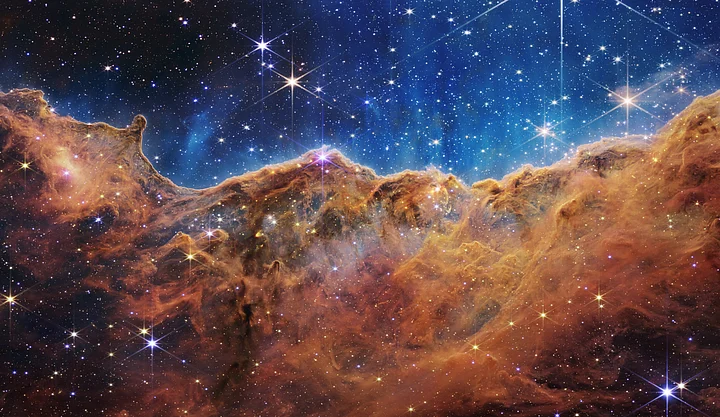Less than a year after its space launch, James Webb telescope detected the "signature of water" on a planet more than a thousand light years away, NASA said on Tuesday, 12 July.
The US Space agency said that the telescope captured signs of water on a "giant gas planet WASP 96-b, which orbits a star 1.150 light-years away."
"For the first time, we've detected evidence of clouds in this exoplanet's atmosphere," NASA tweeted.
This comes as NASA, ESA (European Space Agency) and CSA (Candadian Space Agency) released the first image captured by its telescope – the deepest, sharpest infrared view of the early universe to date.
The image, known as Webb's First Deep Field, spans a patch of sky approximately the size of a grain of sand, held at arm’s length by someone on the ground, and reveals thousands of galaxies in a tiny sliver of the cosmos.
The image shows the galaxy cluster SMACS 0723 as it appeared 4.6 billion years ago, marking the farthest we have ever seen in not just space, but also time.
The combined mass of this galaxy cluster acts as a gravitational lens, magnifying much more distant galaxies behind it, NASA said in a press release.
The space organisation will release the full series of Webb's first full colour images and data, named spectra, at 10:30 am US Time.
The image was unveiled by President Joe Biden during a White House event on Monday.
Galaxy Cluster Image Shows 'Exquisite Details'
The telescope also captured 'exquisite details' of a galaxy group called Stephan's Quintet which is a "galaxy cluster showing huge shockwaves and tidal tails."
Data scientist Giovanna Giardino pointed out how the image revealed "a sort of cosmic dance driven by the gravitational force."
"This is a front row seat to the galactic evolution," NASA tweeted.
More About the James Webb Telescope
The $10 billion telescope is considered to be the most powerful space science telescope ever built, and is engineered to expound the ground-breaking discoveries of other spacecraft, such as the Hubble Space Telescope and the Spitzer Space Telescope.
In 2021, when the satellite rocketed away, NASA stated in a press release that Webb would study infrared light from celestial objects.
"Webb will study infrared light from celestial objects with much greater clarity and sensitivity than ever before. Unlike the short, tight wavelengths of visible light, longer wavelengths of infrared light slip past dust more easily," NASA had said.
(At The Quint, we question everything. Play an active role in shaping our journalism by becoming a member today.)
